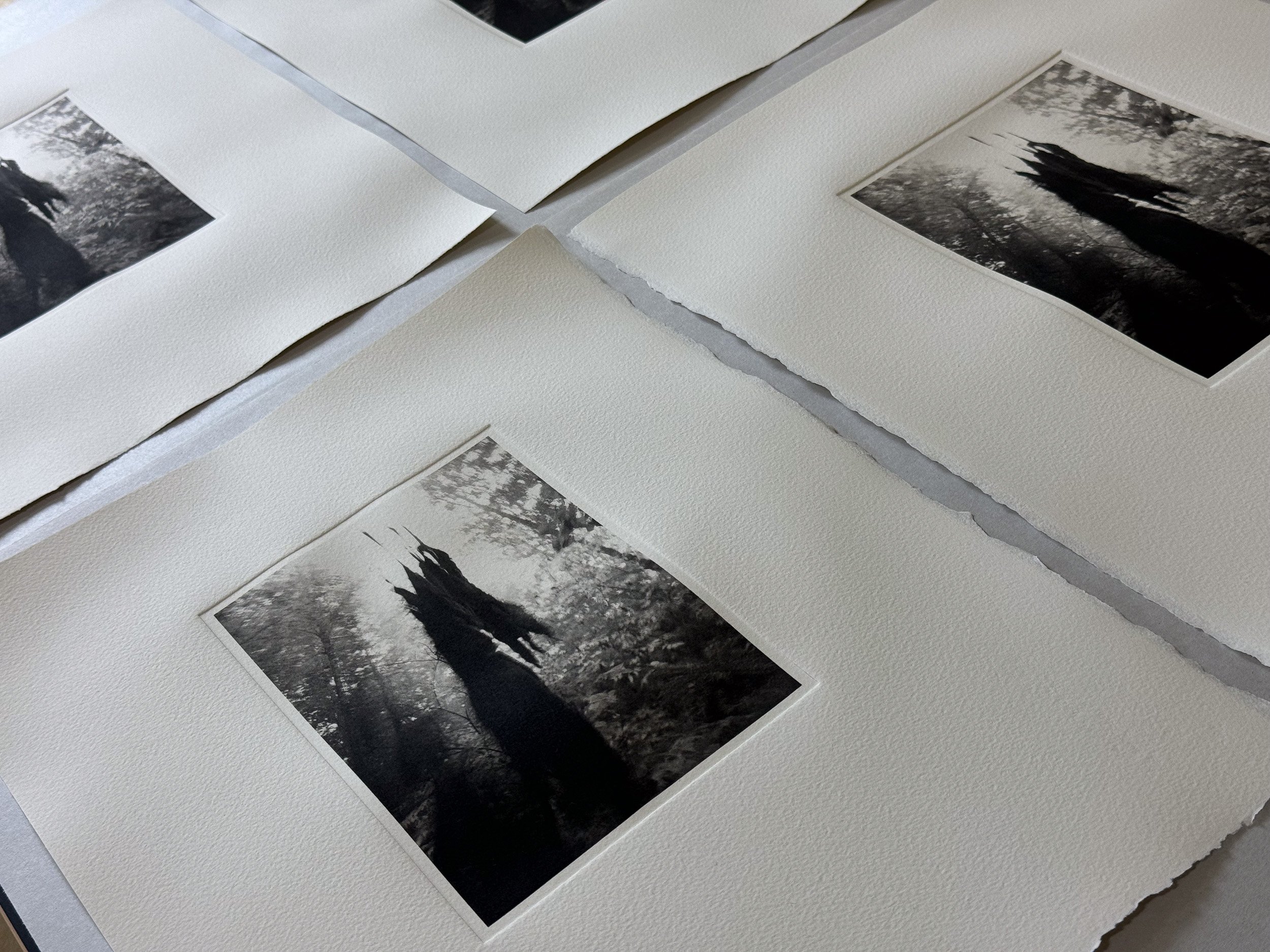Photogravure
Photogravure is a 19th-century intaglio printmaking technique for reproducing an image by incising it into the surface of a plate. It is the direct opposite of relief styles of printing, such as wood engraving or linocut. Photogravure was popularized by several key figures of photography, including Alfred Stieglitz, Alvin Langdon Coburn, Paul Strand, Edward Curtis and Jon Goodman. The photogravure process is complex, requiring many steps and careful attention, but it is capable of producing fine-grained, continuous toned prints with gorgeous detail and breathtaking dimensionality. Composed only of rag paper and archival ink, photogravure prints will last for centuries.
To make a photogravure print, the photograph is chemically etched onto an intaglio plate, leaving microscopic pits in the plate to hold ink. The plate is inked with a brayer, filling the recessed ink wells, and then wiped with a tarlatan and by hand to remove the excess ink. The plate is then covered with dampened rag paper and passed through a high-pressure etching press, transferring the ink to the paper. The resulting tonal values correspond to the depth of the etch and the density of the ink.
In my studio, I use a Conrad Machine Co. etching press, hand-built in Whitehall, Michigan, Charbonnel etching ink—the same used by Renoir, Degas, and Picasso—and a variety of fine art papers made by Arches, Zerkall, Hahnemühle, Ruscombe, Saint-Armand, and Awagami.
Please contact to purchase hand-pulled limited edition photogravure prints or to discuss your photogravure project.






